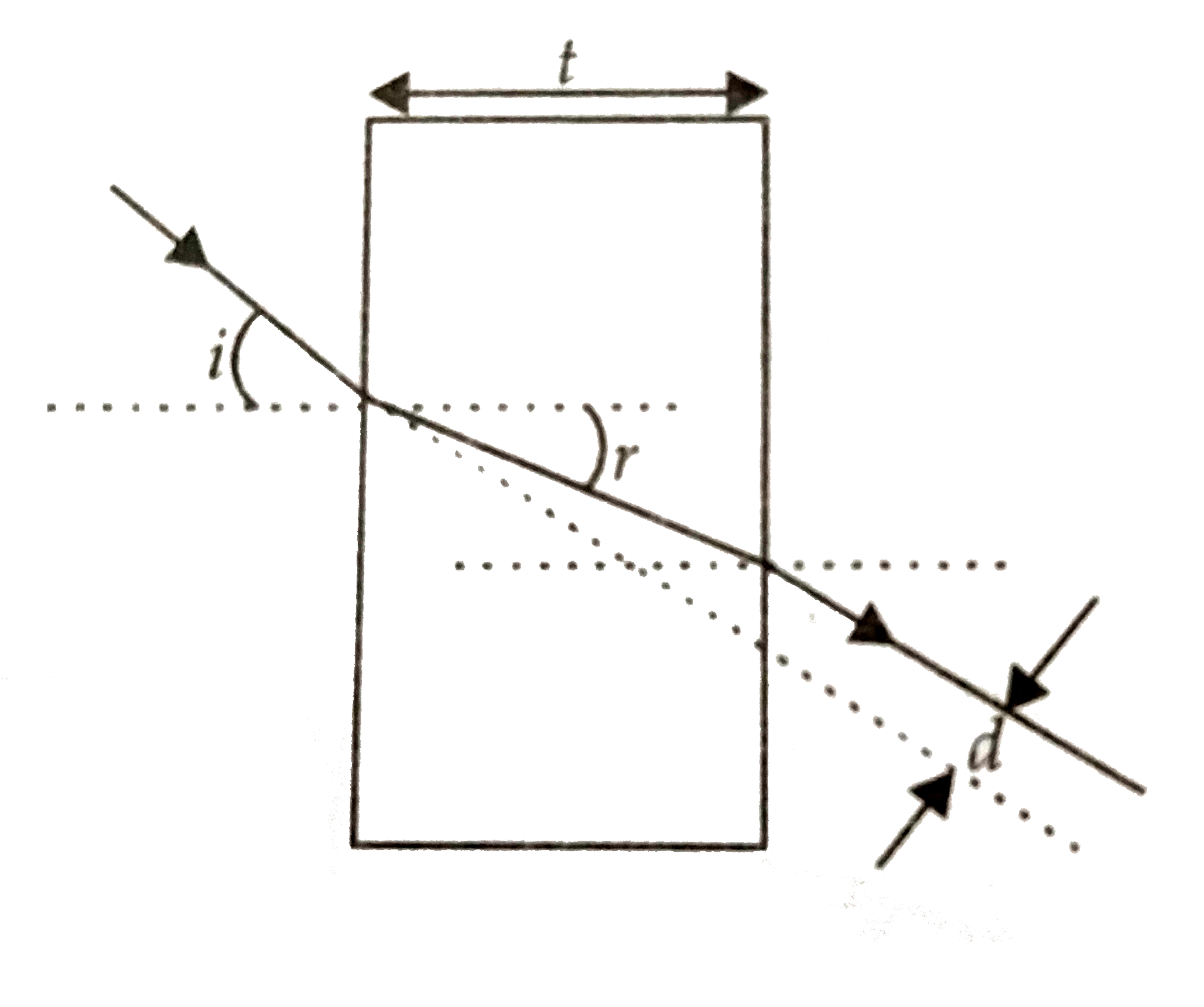A single ray traverses a glass plate (thickness = t) with plane surfaces that are parallel to each other. The emergent ray is parallel to the incident ray but suffers a lateral displacement d. Assuming that glass plate (refractive index μ) is placed in air, find the dependence of d on angle of incidence i. Plot the variation of d with i (changing from 0° to 90°)
The correct Answer is:d=tsini⎡⎢ ⎢⎣1−cosi√μ2−sin2i⎤⎥ ⎥⎦
Step by step video, text & image solution for A single ray traverses a glass plate (thickness = t) with plane surfaces that are parallel to each other. The emergent ray is parallel to the incident ray but suffers a lateral displacement d. Assuming that glass plate (refractive index mu) is placed in air, find the dependence of d on angle of incidence i. Plot the variation of d with i (changing from 0° to 90°) by Physics experts to help you in doubts & scoring excellent marks in Class 12 exams.
Topper's Solved these Questions
- BOOK - ARIHANTCHAPTER - GEOMETRICAL OPTICSEXERCISE - Level 39videos
GEOMETRICAL OPTICS
- BOOK - ARIHANTCHAPTER - GEOMETRICAL OPTICSEXERCISE - Level 39videos
GEOMETRICAL OPTICS
- BOOK - ARIHANTCHAPTER - ELECTROSTATICSEXERCISE - Level 359videos
ELECTROSTATICS
- BOOK - ARIHANTCHAPTER - MAGNETIC EFFECT OF CURRENTEXERCISE - Magnetic effect of Current45videos
MAGNETIC EFFECT OF CURRENT
Similar Questions
A ray of light is incident on the surface of a glass plate of refractive index 1.6 at polarzing angle. Calculate the angles of reflection and refraction.
View SolutionWhat is meant by refraction of light ? State the laws of refraction. Show that emergent ray from a glass slab is parallel to incident ray.
View Solution
Knowledge Check
- Question 1 - Select One
A ray of light strikes a glass slab of thickness t. It emergens on the opposite face, parallel to the incident ray but laterally displaced. The lateral displacement, Δx is
AΔx=0BΔx = t sin ( I - r) cos rCΔx=t sin Icos rDΔx= t sin ( I - r)cos r - Question 2 - Select One
A rays of light is incident on a thick slab of glass of thickness t as shown in figure. The emergent ray is parallel to the incident ray but displaced sideways by a distance d. If the angles are small then d is
 At(1+ir)Brt(1−ir)Cit(1−ri)Dt(1+ri)
At(1+ir)Brt(1−ir)Cit(1−ri)Dt(1+ri) - Question 3 - Select One
A ray of light incident on a glass sphere (refractive index √3 ) suffers total internal reflection before emerging out exactly parallel to the incident ray. The angle of incidence was
A75∘B30∘C45∘D60∘
A ray of light falls on a glass plate of refractive index μ=1.5.
What is the angle of incidence of the ray if the angle between the reflected and
refracted rays is 90∘?View Solution'During refraction of light through the glass slab, incident ray and emergent ray are parallel to each other.' Explain.
View SolutionA ray of unpolarised light is incident on a glass plate of refractive index 1.54 at polarising angle, then angle of refraction is :
View SolutionA ray of light is travelling from glass to air. (Refractive index of glass =1.5). The angle of incidence is 50∘. The deviation of the ray is
View SolutionLight passes through a glass slab with parallel sides and thickness t. If i and r the angles of incidence of refraction, the lateral displacement is
View Solution

